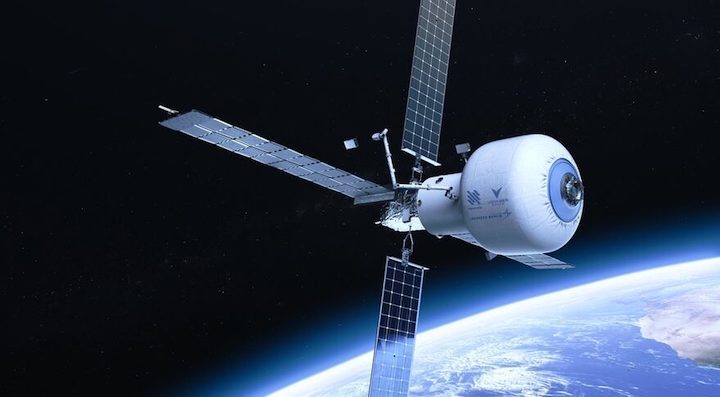27.03.2022

WASHINGTON — Companies developing commercial space station concepts for NASA say they’re working as fast as they can and that additional funding would not speed up their work significantly amid concerns about the long-term viability of the International Space Station.
During a panel discussion at the American Astronautical Society’s Goddard Memorial Symposium March 25, executives with four companies developing commercial space stations said they were on track to have those facilities ready for at least initial operations late this decade, before the ISS is currently scheduled to be retired.
Three of the companies — Nanoracks, Northrop Grumman and Sierra Space — are part of teams that won more than $400 million in awards in December from NASA in the first phase of its Commercial Low Earth Orbit Destinations effort. The fourth, Axiom Space, received a $140 million award from NASA in 2020 to develop a module that will be attached to the ISS as soon as 2024 and serve as a precursor for a stand-alone station.
More money, though, would not necessarily speed up their plans. “Our schedules are aggressive, but if you don’t aim high you’re not going to make it,” said Marshall Smith, senior vice president of space systems at Nanoracks. “Our schedules are already aggressive. If you wanted to accelerate them, maybe that might happen. It depends on how much money.”
He said additional funding would help in risk reduction, though. “What more money does do for you is allows you to take care of problems when they pop up,” he said. “More money would definitely be helpful to ensure that we at least hold the schedules that we have, if not accelerate them slightly.”
“More money would always help,” said Tejpaul Bhatia, chief revenue officer of Axiom Space, citing risk mitigation work. “There are certain things where more money won’t necessarily change the timeline.”
Steve Lindsey, chief strategy officer of Sierra Space, agreed. “We have a risk of a gap that we really have to pay attention to,” he said. “We’re going as fast as we can with the resources we have.”
NASA’s current plan calls for retiring the ISS in 2030 after a roughly two-year transition period with commercial stations. However, NASA’s Office of Inspector General warned last November that, based on experience with past programs like commercial crew, a commercial station “is not likely to be ready until well after 2030.” That report added that commercial partners agreed that the agency’s schedule was “unrealistic.”
That is complicated by the fact that Russian officials were openly skeptical of an extension of ISS operations from 2024 to 2030 even before Russaa’s invasion of Ukraine severed nearly all space ties between Russia and the West other than the ISS.
Lindsey alluded to that in his comments. “NASA has agreed to extend ISS to 2030, but we have major partners — I won’t mention the name — who have only agreed to 2024, so we have a risk of a gap,” he said.
NASA has emphasized that ISS operations remain normal for now, with no near-term changes despite Russia’s invasion and subsequent sanctions. NASA Administrator Bill Nelson said March 23 that work on both the station itself and between mission control centers in Houston and Moscow continued “unaltered” a month after the invasion.
There has been less discussion, though, about what might happen if Russia decided to withdraw from the station after 2024, or if sanctions degraded its ability to continue station operations.
The panel avoided addressing that issue during the hourlong session. “The plan is to extend to 2030,” said Misty Snopkowski, commercial LEO program executive at NASA. “We are definitely not going to retire the space station until one of these platforms is ready.”
Companies were upbeat about their prospects of their commercial stations, despite some uncertainties about the markets those stations will service. Smith, a longtime NASA employee, said he was initially uncertain about the size of the market for such stations. “The demand is actually pent up because ISS only has so much capability,” he said. “I see a tremendously bright future for the commercial destinations market for all of our companies.”
One issue is how companies will work with international partners. “How does one of our companies deliver a space station to orbit but then sell services to international customers,” said Rick Mastracchio, director of business development at Northrop Grumman. He said the company has been in discussions with NASA on potential models but that “nothing has been resolved.”
Bhatia offered a more cautionary note. “Is it pent-up demand, or pent-up desire?” he asked. “Those are two very different things.”
Quelle: SN

